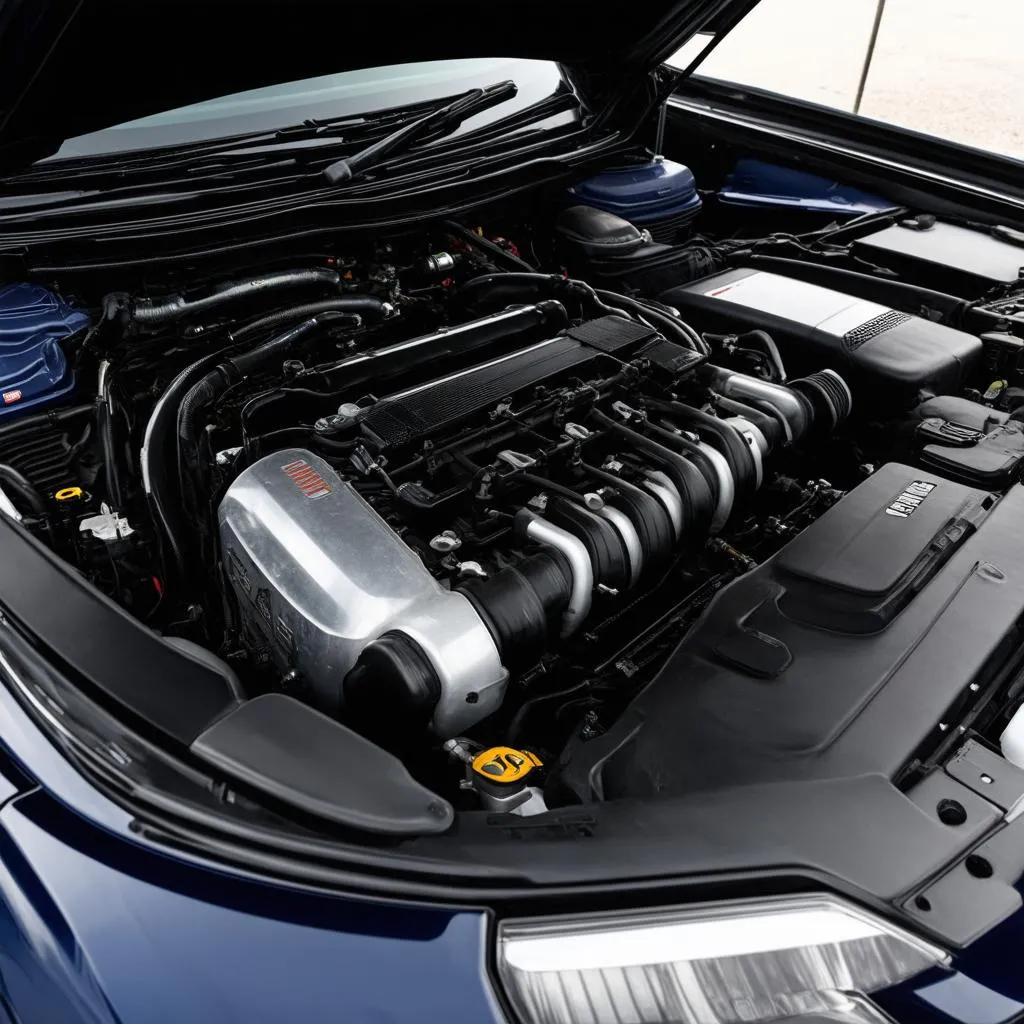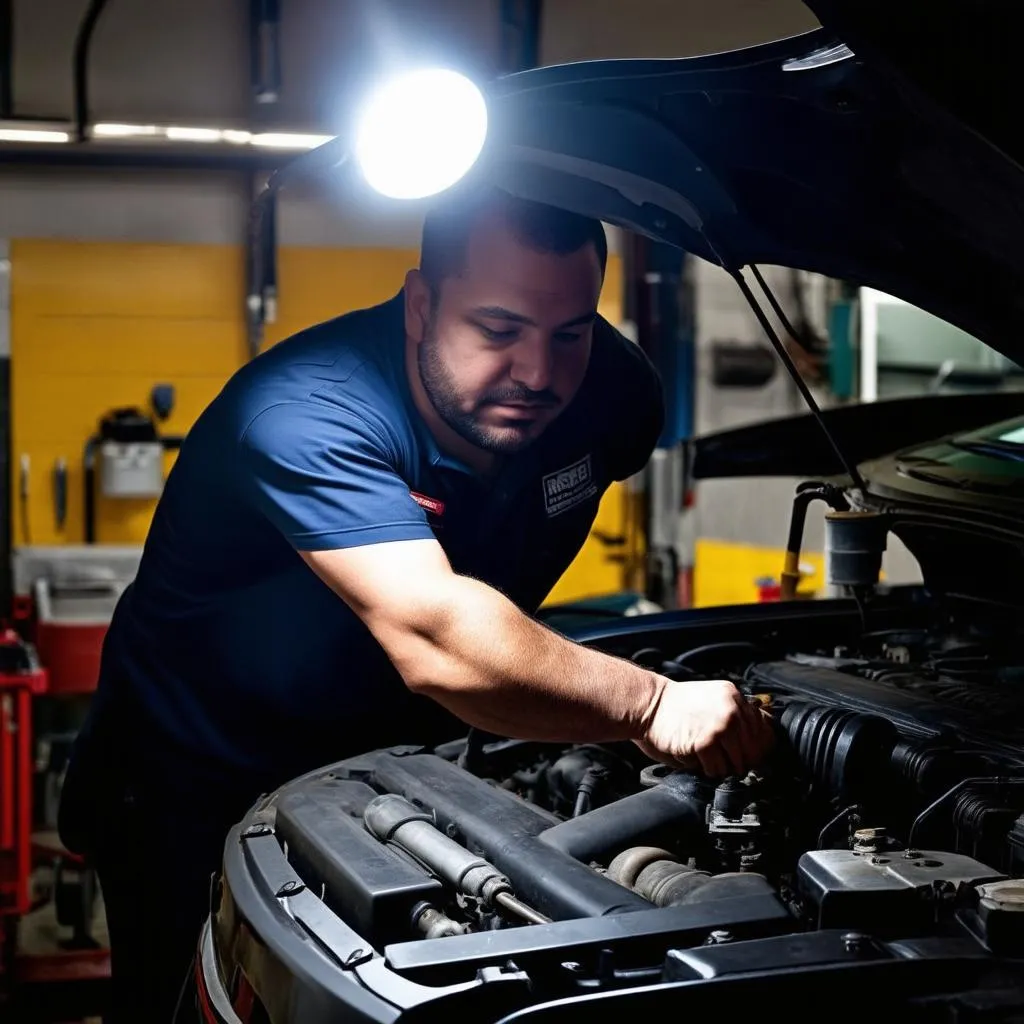“Check Engine” light staring you down again? You’re cruising down the road, enjoying the purr of your Chevy engine, and suddenly, that dreaded yellow light appears. Before you start picturing dollar signs flying out the window, take a deep breath. It might be something as simple (or complex, let’s be honest) as a P0030 OBD code. But what does that even mean?
This guide is here to help you unravel the mystery of the P0030 code, understand its implications for your Chevy, and learn how to get back on the road with peace of mind. We’ll explore the technical jargon, common causes, and potential solutions, all while keeping things simple and relatable.
What Does a P0030 Code Mean in My Chevy?
The P0030 code, in a nutshell, signifies a problem with your Chevy’s heated oxygen sensor (HO2S) control circuit. More specifically, it points to an issue with Bank 1, Sensor 1, which is typically located before the catalytic converter on the engine’s exhaust manifold.
Now, you might be wondering, “What in the world does an oxygen sensor have to do with my car running smoothly?” Well, it’s more crucial than you think! This little sensor plays a big role in helping your engine achieve the perfect air-fuel mixture for optimal performance and reduced emissions.
Unraveling the Causes of a P0030 Code
Like a detective piecing together clues, we need to investigate the potential culprits behind the P0030 code:
1. Faulty Oxygen Sensor: The most common culprit is a worn-out oxygen sensor that’s sending incorrect signals to the engine control unit (ECU). Imagine a messenger delivering the wrong message – chaos ensues!
2. Wiring Issues: Damaged, corroded, or loose wiring in the HO2S heater control circuit can disrupt the flow of information. Think of it as a faulty telephone line leading to miscommunication.
3. Blown Fuse: A blown fuse in the HO2S heater control circuit can cut off power to the sensor, rendering it useless. This is like tripping over the power cord and plunging everything into darkness.
4. Faulty ECU: In rare cases, the issue might lie with the ECU itself, which is like having a confused conductor leading the orchestra astray.
 Car Engine Compartment
Car Engine Compartment
Symptoms Accompanying a P0030 Code
While the check engine light is a tell-tale sign, other symptoms might surface, including:
- Reduced fuel economy: An imbalanced air-fuel mixture can guzzle more gas than usual, hitting your wallet where it hurts.
- Rough engine performance: Your Chevy might experience rough idling, hesitation, or even stalling due to the inaccurate data from the oxygen sensor.
- Failed emissions test: A malfunctioning oxygen sensor can throw your emissions readings off, leading to a failed test and the dreaded trip back to the mechanic.
Troubleshooting and Fixing the P0030 Code
Don’t panic if you’re facing a P0030 code. Here’s a step-by-step approach to tackle the issue:
1. Scan for Codes: Start by using a reliable OBD-II scanner to confirm the P0030 code and check for any other accompanying codes.
2. Inspect the Wiring: Carefully examine the wiring harness connected to the oxygen sensor for any signs of damage, loose connections, or corrosion. Repair or replace any faulty wiring as needed.
3. Check the Fuse: Locate the fuse associated with the HO2S heater control circuit in your Chevy’s fuse box and inspect it for any blown fuses. Replace a blown fuse with a new one of the correct amperage.
4. Test the Oxygen Sensor: Using a multimeter, test the oxygen sensor’s resistance and voltage to ensure it’s within the manufacturer’s specifications. A faulty sensor will need replacement.
5. Consult a Professional: If you’re uncomfortable performing these steps or the issue persists, it’s best to seek professional help from a qualified mechanic specializing in Chevy vehicles. They have the expertise and equipment to diagnose and address the problem effectively.
 Car Mechanic Working on Engine
Car Mechanic Working on Engine
Frequently Asked Questions about Chevy Obd Code P0030
Q: Can I still drive my Chevy with a P0030 code?
A: While you might be able to drive for a short distance, it’s not recommended to ignore the code. Driving with a faulty oxygen sensor can lead to further engine damage, decreased fuel efficiency, and increased emissions.
Q: How much does it cost to fix a P0030 code?
A: The cost varies depending on the underlying cause and your location. A simple oxygen sensor replacement might cost around $200-$400, while a more complex issue involving wiring or the ECU could run higher.
Q: Can I replace the oxygen sensor myself?
A: If you have some mechanical experience, you might be able to replace the oxygen sensor yourself. However, it’s essential to consult your Chevy’s repair manual and follow the proper procedures.
Related Questions about Chevy OBD Codes
- What is a Chevy OBD code P0420?
- How to reset the check engine light on a Chevy Silverado?
- Common Chevy Cruze OBD codes and their meanings.
Chevy Models Prone to P0030 Code
The P0030 code can potentially affect a range of Chevy models, including:
- Chevy Silverado
- Chevy Tahoe
- Chevy Equinox
- Chevy Cruze
- Chevy Malibu
Seeking Expert Help for Your Chevy’s Needs?
Feeling overwhelmed or unsure about tackling the P0030 code on your own? Don’t hesitate to reach out to our team of automotive experts via WhatsApp at +84767531508. We offer 24/7 support and can connect you with experienced Chevy mechanics who can diagnose, repair, and get your beloved car back on the road in no time.
Keep Your Chevy Running Smoothly
Remember, regular maintenance and addressing those pesky warning lights promptly can go a long way in preventing more serious and costly repairs down the line.
Have you experienced a P0030 code in your Chevy? Share your experience and questions in the comments below!